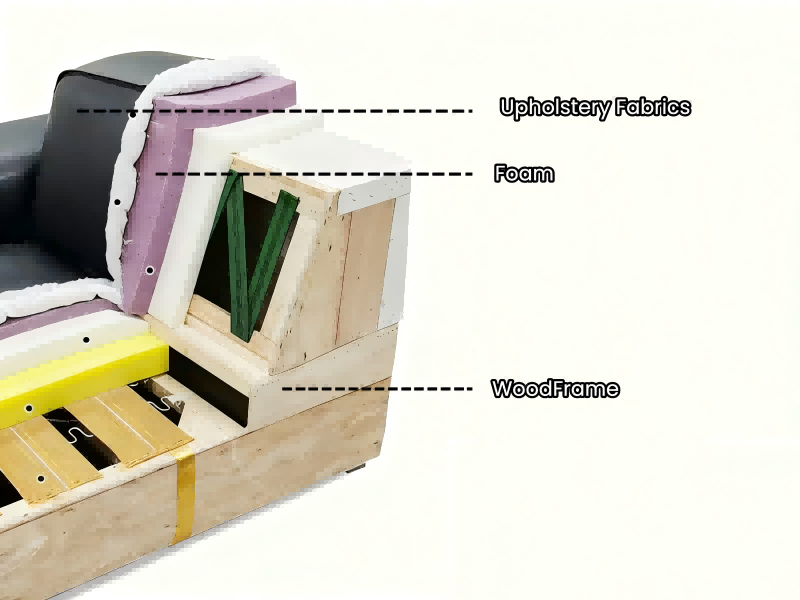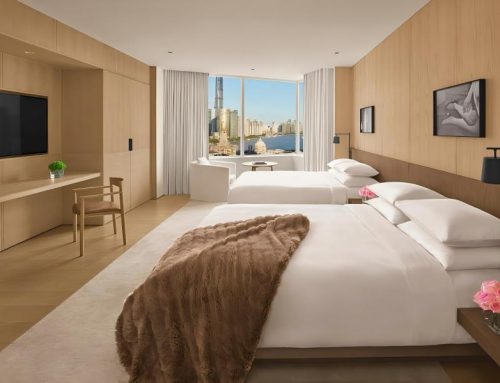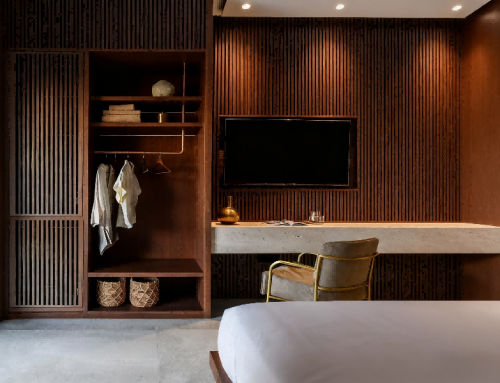1.Why Fire-Retardant Standards Matter for Hotels
When it comes to luxury hotel furniture, ensuring fire safety isn’t just a regulatory requirement—it’s a cornerstone of guest safety and brand reputation. The materials used in your hotel furniture play a crucial role in safeguarding your guests, staff, and property from fire hazards.
Fire-retardant standards are essential for mitigating fire risks in high-traffic environments like hotels. Without proper fire-resistant materials, furniture can become a hazard that jeopardizes the safety of your guests and staff, not to mention exposing you to legal and financial risks.
For hospitality professionals, architects, and hotel owners, it is critical to understand how fire-retardant standards can impact the design, procurement, and long-term success of your hotel. Here’s a deeper dive into why these standards matter and how to incorporate them into your procurement process.
*According to the NFPA (National Fire Protection Association), upholstered furniture remains one of the leading sources of fatal fires in commercial interiors.
2.What Are Fire-Retardant Standards and Why Are They Critical?
Fire-retardant standards are specific regulations and classifications that ensure furniture materials are treated or designed to resist fire and prevent the rapid spread of flames. These standards apply to various materials used in the production of FF&E (furniture, fixtures, and equipment), including upholstery, foam, textiles, and wood.
Hotels, especially luxury properties, are particularly vulnerable to fire risks due to the high volume of guests and dense, often highly decorated interiors. That’s why fire-retardant standards are a fundamental part of the hospitality industry’s safety protocols. Without adherence to these regulations, your hotel could face significant legal consequences, increased insurance premiums, and potentially even permanent damage to its reputation.
Understanding these standards is just the first step. But what do they actually mean for your hotel’s furniture and operations?
3.What Does It Mean for Your Hotel Furniture?
Fire-retardant standards apply to all types of furniture in the hotel: from sofas and chairs to beds, headboards, wardrobes, and even smaller pieces like ottomans or side tables. The materials used in these pieces must pass rigorous testing to ensure they don’t catch or spread fire easily. In hotels, this applies particularly to guest-facing areas like the lobby, lounges, and restaurants where fire safety standards are scrutinized more closely.
Guest Experience: Ensuring fire safety is paramount to creating a secure environment for your guests. In fact, it can directly impact your hotel’s brand reputation and trustworthiness.
Brand Consistency: Hotels that fail to meet fire safety standards can find their brand image tarnished, affecting long-term business prospects.
Legal Compliance: Hotels must meet the fire safety laws and regulations set by local governments or international standards, and failure to do so can result in significant fines and liabilities.
4. Key Fire-Retardant Standards to Know in Hospitality
When sourcing fire-retardant furniture for hotels, it’s not enough to rely on visual quality — compliance with international fire safety standards is a legal and operational necessity.
Below are the most recognized regulations across key hospitality markets and how they apply in real procurement scenarios:
BS 5852:2006 (United Kingdom)
This British Standard evaluates how upholstered furniture reacts to open flames and smoldering cigarettes — two of the most common ignition sources in hotels.
Where it applies: Guest rooms, lobbies, restaurants, and public areas.
What it means for buyers:
When purchasing sofas or headboards for a UK project, always request a BS 5852-compliant test report from the manufacturer. Some overseas suppliers may not have this certification unless it’s specifically required at the order stage.
➡ Example: IFC supplies bespoke upholstered furniture tested under BS 5852:2006 to leading hotels in London and Manchester.
EN 1021-1 & EN 1021-2 (European Union)
These European standards assess how seating materials perform when exposed to a smoldering cigarette and a small open flame.
Why it matters: Required in nearly all EU member states for furniture used in public or hospitality spaces.
Common mistake: Many imported pieces pass visual inspection but fail EN testing once installed — leading to costly replacements or project delays.
➡ Best practice: Verify compliance certificates before production begins, not after delivery.
CAL TB 117-2013 (United States, California Standard)
This regulation defines flammability testing for upholstered furniture, particularly foam and fabric components.
Hotel relevance: Used by many American brands for consistency across global projects.
Procurement tip: When sourcing from Asia for U.S. hotels, ensure both foam density and fabric backing meet CAL TB 117 standards to avoid shipment rejection at customs.
5.Common Fire-Retardant Materials in Hotel Furniture
When selecting furniture for luxury hotels, choosing the right materials is crucial to ensure fire safety and compliance with local regulations. Below are some of the most commonly used fire-retardant materials that ensure safety without compromising on luxury or design aesthetics.
- Upholstery Fabrics
Fabric: Upholstery fabrics, especially those used in sofas, chairs, and lounge areas, can be treated with fire-retardant chemicals to reduce flammability. These treatments make fabrics less likely to catch fire when exposed to heat or flames. Popular fabric types include microfiber(known for its stain resistance) and polyester blends, which can be treated to meet fire safety standards. - Foam
Foam: The foam used in cushions, mattresses, and other soft furnishings is often a primary concern for fire safety. High-density foam or memory foamthat is treated with fire-resistant chemicals can help prevent rapid flame spread. It is critical to ensure that foam complies with local standards like CAL TB 117in the U.S. or BS 5852 in the UK. - Wood and Veneers
Wood: Natural wood can be treated with fire-retardant finishes to make it less susceptible to ignition. Engineered woodand veneerare also often used in hotel furniture. Veneer provides a luxurious appearance and is a cost-effective solution, but the underlying material must be treated for fire resistance. - Metal and Glass
Metal: Materials like stainless steeland aluminumare inherently fire-resistant. These materials are perfect for structural elements like furniture frames, legs, and accent details, ensuring durability and fire safety.
Glass: While glass itself is fire-resistant, special tempered glass can be used in furniture designs, offering both safety and elegance. It’s essential for hotel owners to select tempered glass that meets fire-safety standards, especially for larger installations such as partitions and tabletops.
6.IFC Fire-Retardant Furniture Sourcing Best Practices
At IFC FF&E, we understand the critical importance of fire safety and compliance in luxury hotel furnishings. Our best practices ensure that every piece of furniture meets the highest fire-safety standards while enhancing the guest experience:
High-Quality Materials: We use only top-tier materials that are tested for fire resistance, ensuring that every piece of furniture is safe, durable, and beautiful. Whether it’s upholstery fabrics, foam, or wood, we prioritize fire safety in every step of the manufacturing process.
ISO-Certified Manufacturing: Our facilities are ISO-certified, which means we follow stringent quality control processes to meet international fire-safety standards. This certification assures our clients that every item we produce meets the highest industry standards.
Custom Solutions: We offer bespoke, made-to-order solutions for luxury hotels, ensuring that each piece of furniture is tailored to your specific needs while meeting all fire-safety regulations. Our team works closely with designers and project managers to create furniture that reflects your brand while keeping safety in mind.
Fire Testing and Certification: We provide fire testing for all our materials, ensuring compliance with international standards like CAL TB 117, NFPA 701, and EN 1021. This rigorous testing process guarantees that all our furniture meets fire-resistance regulations before it reaches your hotel.
7.How Fire-Retardant Standards Impact Hotel Procurement
For hospitality procurement professionals, the importance of sourcing fire-compliant furniture cannot be overstated. A critical part of the sourcing process involves ensuring that the FF&E products meet the necessary standards for fire safety.
Key steps include:
Verifying Certifications: Always request certifications that confirm the materials and products comply with local and international fire-safety regulations, like NFPA (National Fire Protection Association) and EN standards (European Norms).
Understanding Material Compliance: Different materials come with different fire-resistance capabilities. For example, leather and microfiber can be treated with fire-retardant chemicals, while metal and glass are inherently non-combustible.
Testing & Pre-Production Check: Before finalizing the procurement order, it’s crucial to conduct sample testing for fire resistance, ensuring that the furniture aligns with the required standards.
8.Conclusion: The Importance of Fire-Safe Furniture in Luxury Hotels
When it comes to luxury hotels, the safety of your guests is paramount. By investing in fire-retardant furniture that meets international standards, you protect your guests and enhance your hotel’s reputation. The right furniture not only ensures safety but also contributes to a luxurious and comfortable experience for your guests.
Partnering with a trusted supplier like IFC FF&E guarantees that you’re investing in high-quality, fire-compliant furniture that’s built to last, keeping your property safe and operational for years to come. Stay ahead of regulations and provide a secure, stylish environment for your guests—because fire-safety compliance is not just a requirement, it’s an opportunity to elevate your hotel’s reputation.







